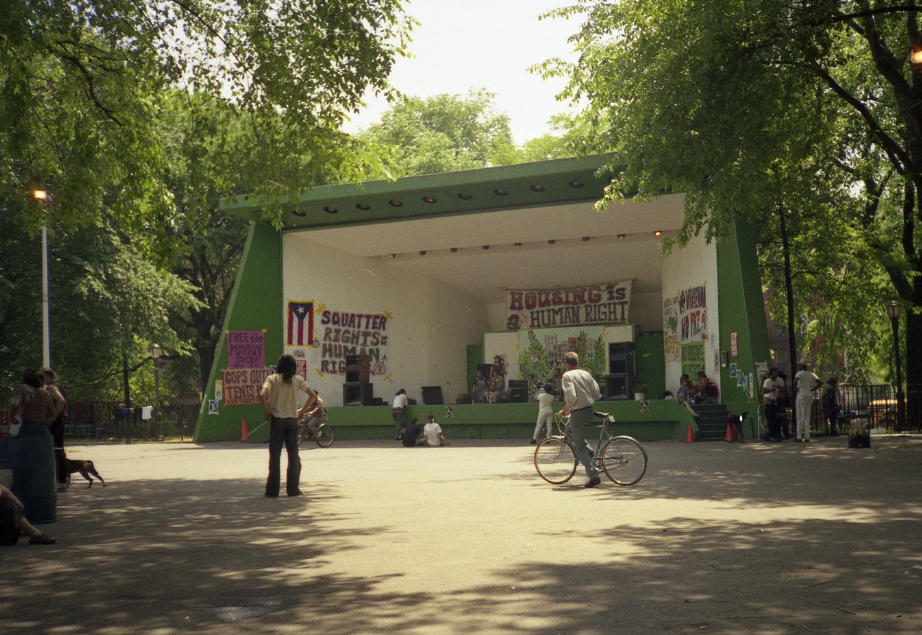Signaling Change: Remembering the Tompkins Square Park Bandshell
The Tompkins Square Park bandshell, constructed in 1966, was the center of cultural and political movements in the East Village during the tumultuous decades of the late 20th century. From its use as a backdrop for the founding of the Young Lords Party in 1969, to the Grateful Dead’s first-ever New York City show, the bandshell is known for the many legendary events that took place on its stage. However, the bandshell also worked as a key symbol in the evolution of Tompkins Square Park as a hub for sociopolitical ferment and protest.

There were other significant pop culture moments that occurred at the bandshell prior to more turbulent years at Tompkins Square Park. Sun Ra and his Arkestra performed at the venue, as did Allen Ginsberg, Jimi Hendrix, Ornette Coleman, and countless drag queens as part of the Wigstock Festival. It was during the earlier years of the bandshell’s existence that the structure thrived as a focal point of performance in park. But by the late 1980s, the role of the bandshell began to transform, shifting towards tensions around housing in a changing East Village.

One of the more notable events of protest at Tompkins Square Park was the Memorial Day Riot of 1991. This followed the announcement of plans to demolish the bandshell and renovate park infrastructure. The announcement was controversial, as some saw it as a long overdue opportunity to improve conditions in the park, whereas others saw it as an effort to promote gentrification of the area and to unnecessarily police activities within the park.

During this time, Mayor Ed Koch simultaneously introduced “quality of life” policing to the park and elsewhere, as crime rates in the city reached record highs. This policing targeted the bandshell at Tompkins Square Park, which had been serving as a shelter for dozens of individuals. A forced curfew and removal of encampments were instituted in the park, eventually creating significant unrest and clashes between some parkgoers and police. The loss of beloved infrastructure like the bandshell, at the time used for much different purposes than originally planned, played a part in instigating the Memorial Day Riot.

Today, Tompkins Square Park contains fewer physical symbols of the historic activism and unrest that were once commonplace in the East Village. The redesign of the park signals a vast shift in the late 20th century of how public spaces like these were used, policed, and organized, reflecting the ongoing changes in the East Village during this period.
Sources Cited:
• “Bring back the band shell! Activists to stage campaign” (2006), AMNY: The Villager, https://www.amny.com/news/bring-back-the-band-shell-activists-to-stage-campaign/
• “20 years ago: The East Village Memorial Day riot on Avenue A” (2011), EV Grieve, https://evgrieve.com/2011/05/20-years-ago-today-east-village.html
• “Welcome to Our Resistance: The What and Why of the Tompkins Square Park Rebellion” (2007), Alan W. Moor

The Tompkins Square Park riot was in August of 1988. That was the most significant one. The city closed up the park at night for years afterwards to clear up the homeless in TS tent city. This made way for the death of the neighborhood by welcoming gentrification.
Oh. And Mayor Koch was mayor until I think 1989…or 8.